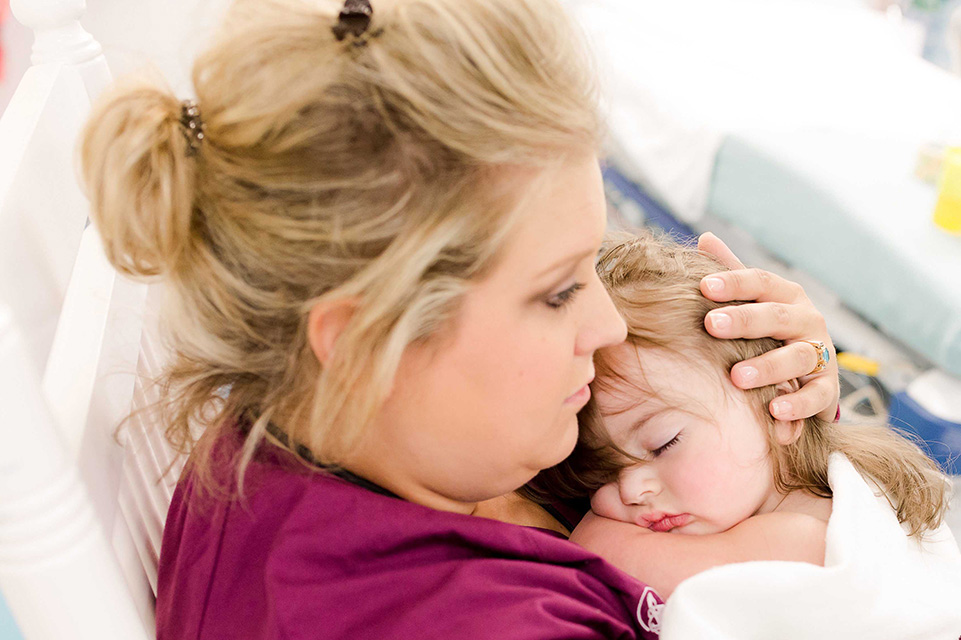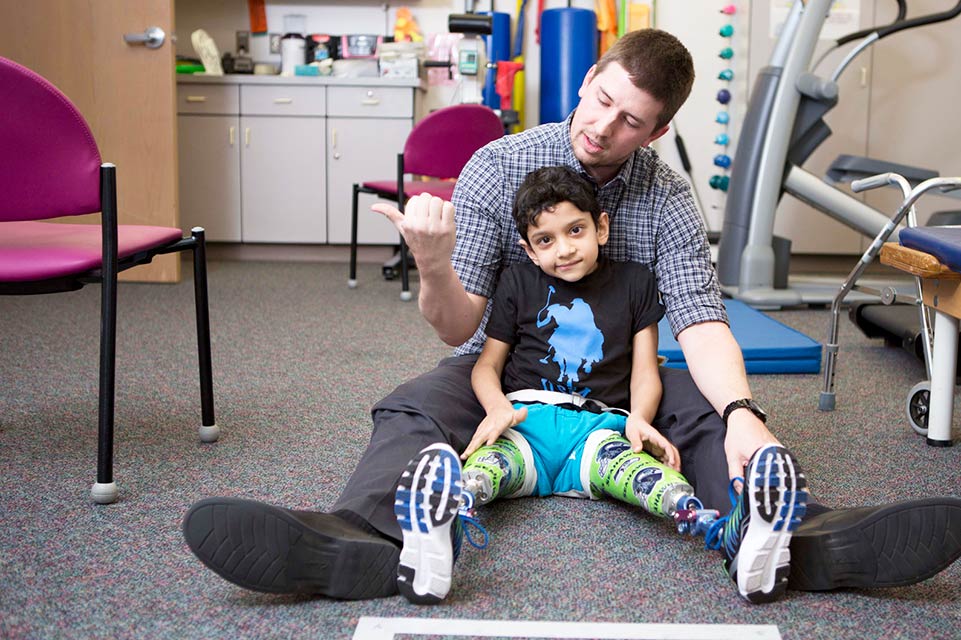Spinal Muscular Atrophy
Shriners Children's offers compassionate and comprehensive care for your child with spinal muscular atrophy.
Spinal muscular atrophy (SMA) is a group of different muscle diseases that cause a defective or missing "survivor neuron gene." This gene makes your body produce a protein that feeds neurons in the spinal cord. Without this protein, neurons break down and eventually stop functioning. This affects a child’s ability to walk, crawl, breathe, swallow and control their head and neck.
Having a family history of spinal muscular atrophy is a risk factor for all types of SMA. A child must receive the defective gene from both parents to be affected.
There are three types of SMA, which are generally determined by the age at the onset of the disease and the degree of the symptoms.
Types of Spinal Muscular Atrophy
SMA3: Referred to as Wolhfart-Kugelberg-Welander disease, occurs in infants as early as 18 months and as late as adolescence. Children diagnosed with SMA3 may have trouble walking, experience mild muscle weakness, and are at risk for respiratory infections.
SMA2: This type is also known as intermediate SMA and usually affects infants between 6 and 18 months old. Children with this type may be able to sit independently, but usually do not walk unassisted. The progression of symptoms can vary greatly.
SMA1: This is an acute form of SMA and is also referred to as Werdnig-Hoffman disease or infantile-onset SMA. It starts the earliest, usually at birth. Infants with this type usually have the most severe symptoms. Over time, the weakening of muscles can lead to respiratory infections and lung collapse. Sixty percent of children with spinal muscular atrophy are born with SMA1.
Recognizing Signs of Spinal Muscular Atrophy
For each type of SMA, there are common signs that can help identify the start of the disease.
- Signs for SMA3 include increasingly severe respiratory infections, worsening posture, and nasal-type speech.
- Signs for SMA2 affect the legs in more noticeable ways, such as a child not crawling or walking.
- Signs for SMA1 are the most noticeable and usually affect more than just the limbs. Common signs include floppy limbs or trunk, limited movements of the arms and legs, difficulty holding their head straight, difficulties feeding and swallowing, weak sucking reflex, difficulty breathing, and respiratory infections.
How We Diagnose Spinal Muscular Atrophy
Once symptoms of SMA are noticed, Shriners Children's physicians can conduct several tests to diagnose the type of SMA they may have. These tests include:
A simple blood test designed to identify any absence or change in the gene that causes SMA. If symptoms are present and there is no other indication of the disease in the blood test, additional genetic tests will be needed to confirm the diagnosis.
A muscle biopsy would be the next step if the blood tests are inconclusive. A biopsy involves a small sample of your child’ muscle being carefully removed and examined.
An electromyogram (EMG) test that measures the electrical activity of a single muscle or a group of muscles can also be useful in diagnosis. This test detects any abnormal electrical muscle activity caused by diseases like SMA.
Evaluation and Treatment of Spinal Muscular Atrophy
Since there currently is no cure for spinal muscular atrophy, Shriners Children's focuses our treatment goals on managing any pain that your child may have and improving their quality of life.
Some of the treatments we provide at our locations include respiratory treatment, surgery, and occupational and physical therapy.
They looked at us and said, ‘It does not matter the diagnosis or disease, here at [Shriners Children's] we will not take no for an answer. We will work our hardest to get your child to walk.’ Their determination to help our son gave me hope.

Providing Compassionate Care and Support
Innovative Treatments
View All
Pediatric Surgery

Occupational Therapy

Physical Therapy


